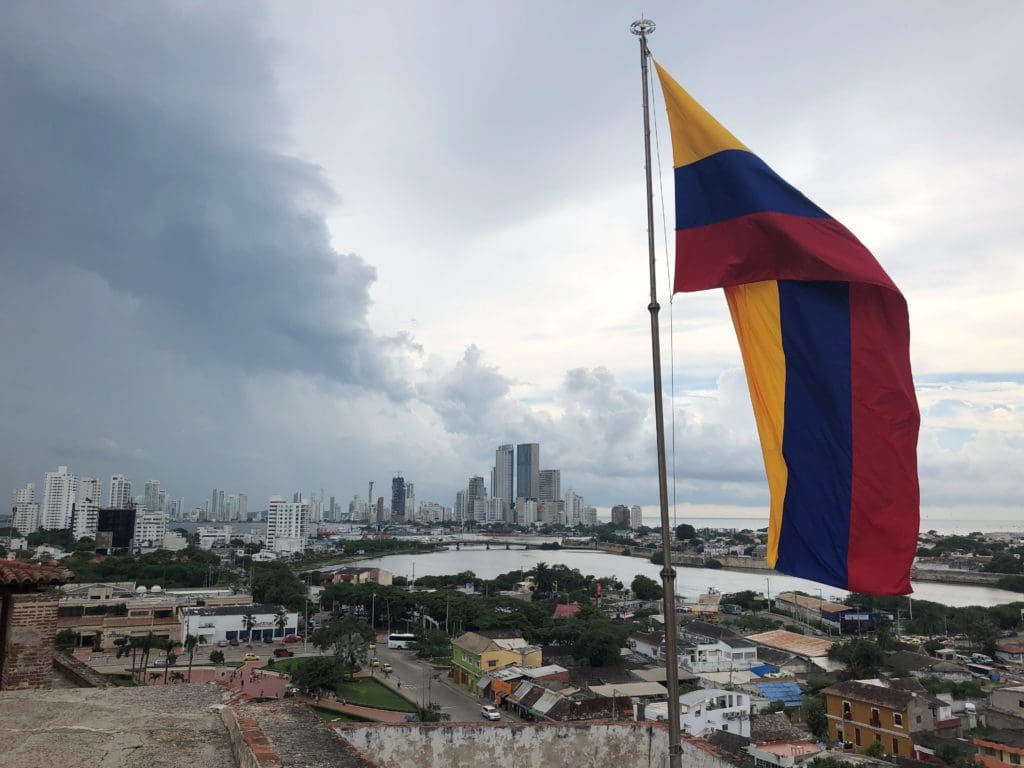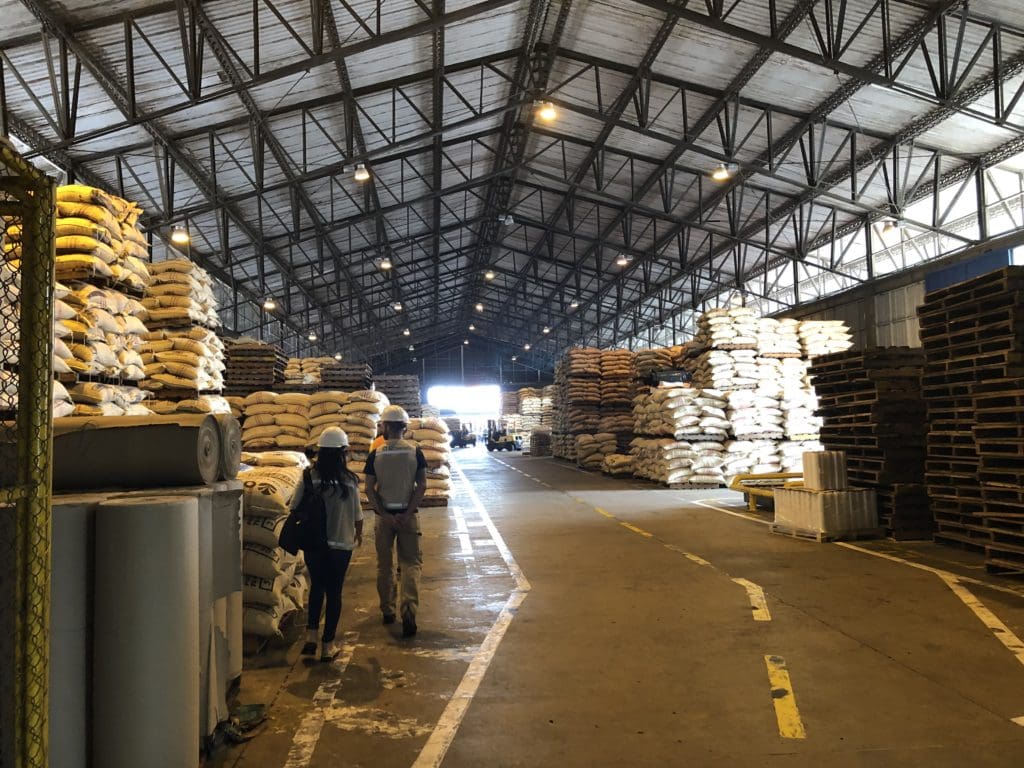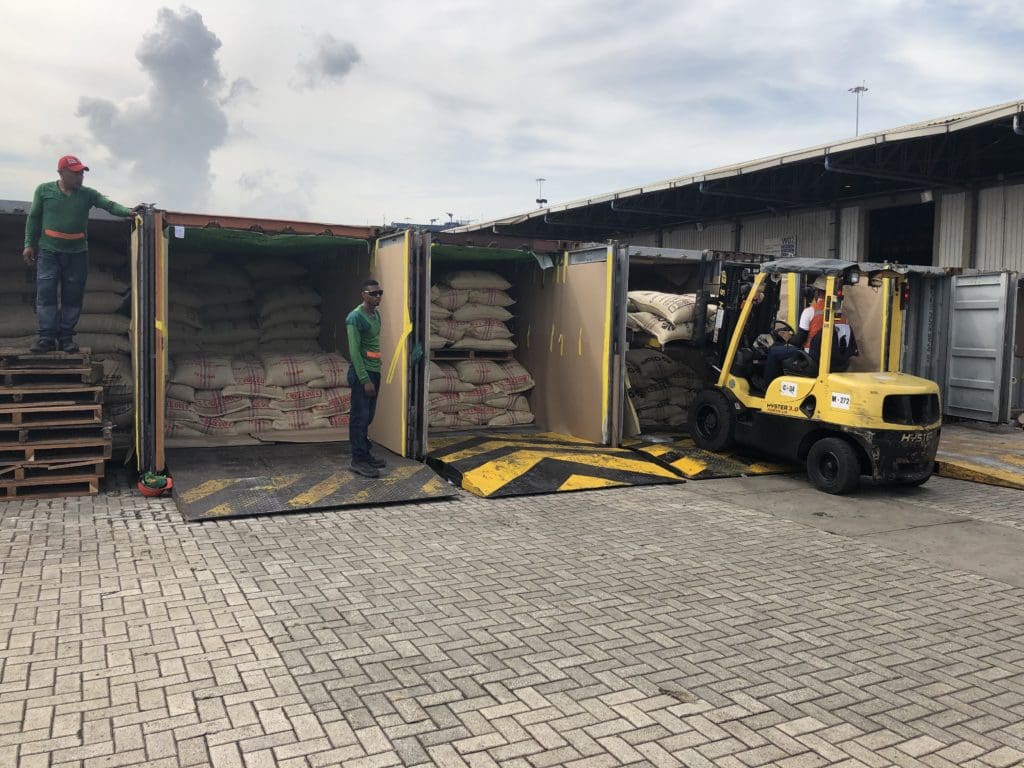As specialty buyers we can sometimes get so caught up in quality, character and origin story that it can be easy to overlook the many steps required to move coffee from the farm to the roastery. Logistics is a massive component of this process and Colombia’s ocean freight terminals handle more containers of coffee than any other producing country on earth. I don’t know why it took me 14 years of traveling to Colombia to plan a visit to Cartagena but in November 2019 I finally made it happen.
Established by Spain as a colonial port in the 16th century, Cartagena is a spectacular city situated in the center of Colombia’s Caribbean coast. After decades of attacks and invasions by marauding pirates the Spanish government started pouring fortunes into the restoration and fortification of Cartagena in the late 17th century. Many of these structures still stand today and are emblematic of historic Cartagena. The old town center is encompassed by over 11 km of walls containing more than 20 small forts and cannon batteries. More a fortress than a castle, the imposing Castillo de San Felipe de Barajas has dominated the old town skyline for centuries. San Felipe was designed to repel attacks from both sea and land and is riddled with tunnels, storage caverns and cisterns allowing defenders to withstand a siege for months on end.
Modern Cartagena is about as trendy and cosmopolitan as a city can get, with skyrise hotels, casinos and night clubs just minutes away from the old town center and pre-Columbian archeological sites. There’s also an impressive specialty coffee scene which makes spending a few days in the old town center extra enjoyable. One of Cartagena’s port terminals is located in an area called Manga and caters almost exclusively to the many ocean cruise lines that bring in tourists to enjoy the city’s amenities. While this same port terminal also handles some commercial cargo (including coffee,) the majority of Cartagena’s coffee exports leave via the massive Contecar port terminal located just SE of the old town center in the neighborhood of Mamonal.
Contecar is a private company contracted by the Colombian port authority to manage inbound and outbound ocean freight cargo. The administration and logistics required to do this efficiently and securely boggle the mind, especially when handling a variety of sensitive and perishable products. The Colombian Coffee Federation (Federación Nacional de Cafeteros or FNC) has a subsidiary company called Almacafe that specializes in coffee preparation and logistics. Almacafe has a cupping lab and small warehouse at the Manga terminal and oversees the movement of coffee at the Contecar terminal where a much larger warehouse is utilized for short term storage.
The coordination between private exporters, the FNC/Almacafe, the port terminals and the ocean freight steam ship lines is like a ballet, no joke. Every stakeholder has extremely complex roles and responsibilities and if any small detail is out of place an entire container of coffee can be delayed by weeks or even months. It’s a challenging system to understand even after seeing the process firsthand. Describing it in a short article may be even more challenging but I’ll do my best here.
- When a container volume of coffee is ready for shipment the exporter submits an “Export Announcement” to Almacafe (FNC.)
- Before leaving the exporter’s facilities the coffee is prepared, packaged and ready to load into the container. Once the FNC has verified that the paperwork is in order, the exporter loads the coffee bags into the back of a truck to be driven to the port terminal.
- Important to note that the shipping container is not loaded at the exporter’s site as is common in many countries. In freight parlance this process where the container is loaded at the port rather than at the exporter’s facility is referred to as “LCL/FCL,” as opposed to “FCL/FCL” where the container is loaded at the exporter’s facility then moved to the port.
- Having received the exporter’s announcement docs, Almacafe will coordinate with the ocean freight steam ship line (SSL) to prepare a container per the exporter’s requirements (container size, lining type, etc.)
- When the exporter’s truck arrives at the port terminal, a sample of coffee is taken from each export lot and sent to Almacafe’s office at the Manga terminal for quality verification. Almacafe graders will evaluate each sample for green aspect and cup quality to verify that it meets minimum FNC quality standards. If standards are met, a Certificate of Quality is issued.
- Prior to 2016, any coffee that did not meet minimum FNC standards (including coffees with over-fermented flavors) could not be exported. Due to the growing popularity of Naturals the FNC received many requests for exceptions in cases where the final buyer (importer) accepted responsibility for the “questionable” quality.
- In 2016 the FNC began permitting export of coffees of “questionable” quality. The caveat being that any coffee that does not meet minimum FNC standards would not receive a Certificate of Quality and could only be exported as “Product of Colombia.”
- Once Almacafe’s evaluation of each lot in the shipment is complete the coffee is cleared for export. The bags of coffee are transferred from the truck into Almacafe’s holding warehouse at the terminal until the container is made available.
- In most cases export-ready coffee is packaged in 70 kg coffee bags which are palletized and loaded into the container by forklift. In some cases, coffee is bulk loaded into a food grade liner inside the container. Coffee for bulk shipment is delivered to the port in bags, then bags are emptied onto a conveyor belt that transfers the coffee to the liner opening at the top of the open container door.) These bags can often be returned to the exporter and reused, so it’s common to see bags stenciled with spaces for multiple ICO marks.
- Once the container is stuffed and sealed it is transferred to the yard where it waits until the ship with the booked space has arrived and is ready for loading. A dazzling network of trucks, trailers and cranes move containers around the yard like Tetris pieces at white-knuckle speeds that rely on a surprising amount of operator skill and visual acuity. When its time comes the container is loaded onto the ship bound for its final destination, occasionally via a transshipment port depending on the shipping lane.
The process involves many, many more steps than can be described here but hopefully this is a good introduction to the process. Keep an eye on our News section for more posts about logistics in the future!


